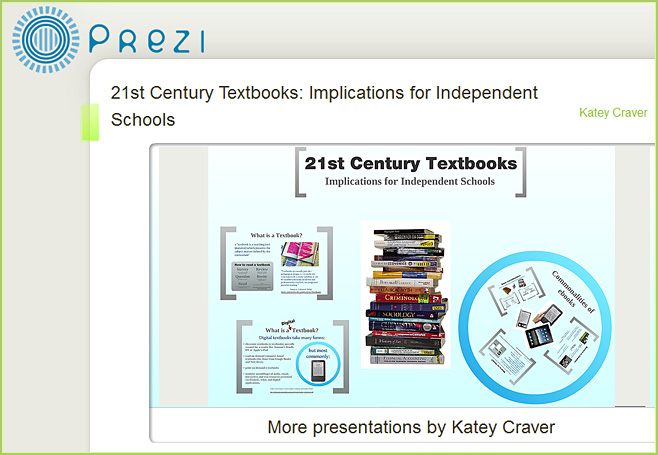EDUCAUSE Review
Volume 46, Number 2 | March/April 2011
Getting a Handle on Mobile: Perspectives
Features
Mobile Literacy
Why Mobile?
Mobile Matters: Communication Trumps Technology
EDUCAUSE Review
Volume 46, Number 2 | March/April 2011
Getting a Handle on Mobile: Perspectives
Features
Also see:
Pearson & McGraw-Hill make multi-million dollar investment in Inkling — from Kirsten Winkler
It seems as if the latest study from Xplana in which they predict that the tipping point for digital textbooks is as near as 2015 has opened up the wallets of two major publishers for an undisclosed “multi million Dollar” investment.
Inkling, the maker of the iPad application and platform which delivers enhanced and engaging textbooks, leaving the “flat, PDF-based digital textbooks” behind is the beneficiary and it could give the startup a competitive edge over the well funded competitor the Kno.
But as money is not everything Inkling, Pearson and McGraw-Hill also made some significant content commitments, boosting the number of titles available on the Inkling platform…
Also see:
Bootstrapped Publishing – DIY FTW — from thinktiv.com
Digital textbooks reaching the tipping point in the U.S. higher education — A revised five-year projection — from xplana.com by Rob Reynolds
7 things you should know about open textbook publishing — from Educause, March 2011, by Judy Baker (Foothill College) and Jacky Hood (Foothill College)

.
Originally saw this at xplana.com.
Podcast: The New York Times joins colleges to create online courses — from The Chronicle by Josh Fischman
Textbook publisher announces ‘app’ approach to learning materials — from The Chronicle by Jeff Young
Long Beach—The phrase “there’s an app for that” may be coming to textbooks.
Today a major textbook company, Cengage Learning, announced a new e-textbook publishing platform that lets professors plug in apps, some made by other software companies, to add to traditional textbook content features like tutoring services or the ability to trade margin notes with other students.
The system is called MindTap, and it is scheduled to be announced at the annual TED conference here. When Chris Vento, Cengage’s executive vice president for technology and development, explained the system to a reporter, he felt the need to put the word “textbook” in air quotes, since traditional textbook content is a small part of the new product. These digital textbooks essentially bundle together several products sold by Cengage and its subsidiaries, including their electronic test-bank system, called Aplia, as well as videos and other materials that the company owns the rights to, including the archives of Newsweek. And MindTap allows professors to customize the presentation of the material, by adding their own slides, video lectures, articles, or free online content from elsewhere.
The Future of Media — by Chris Brogan
.
Brief summary/notes from DSC:
Per Kevin Kelly (Feb 2011), the future is about 6 verbs:
- immediacy
- personalization
- authentication
- findability
- embodiment
- interpretation
- accessibility
- attention
Originally from — and see: